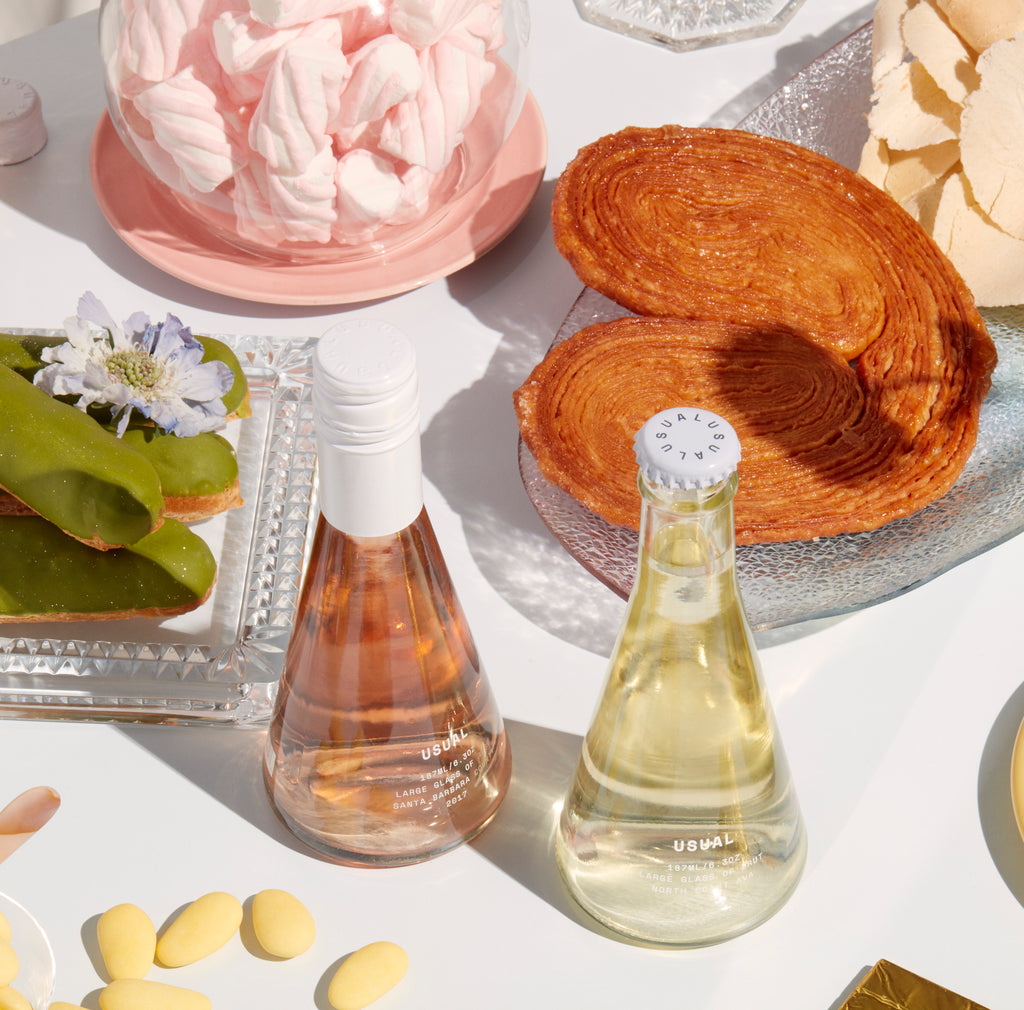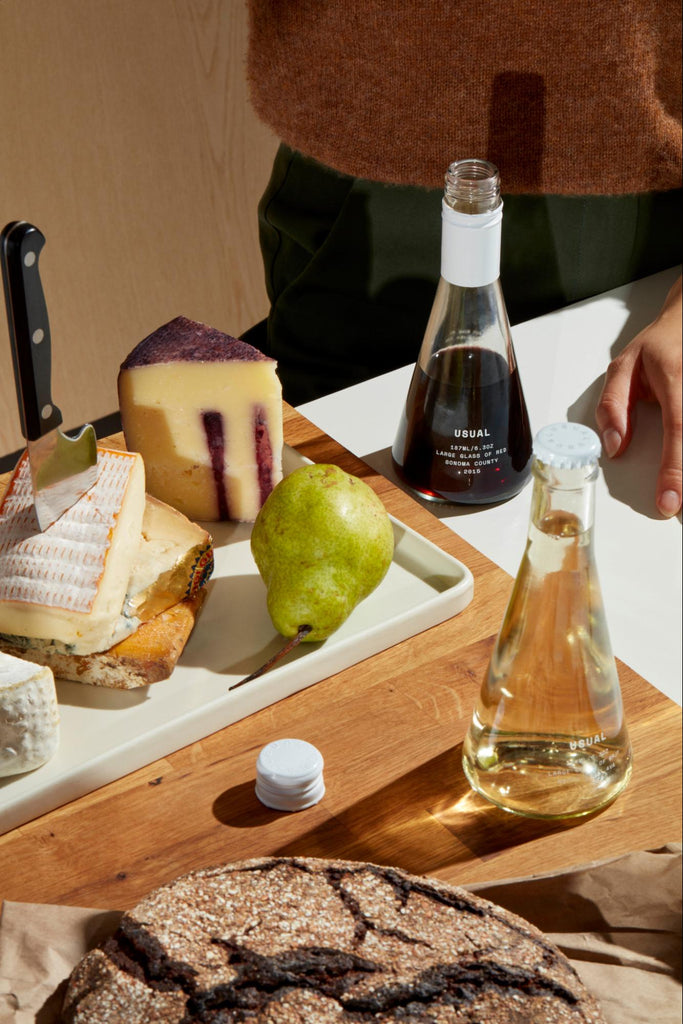Your cart looks a little empty!
Continue Shopping
Guide To Sweet Wines for Those Who Don’t Like Sweet Wine
When you hear the phrase "sweet wine," you might immediately think of a candy-like liquid that runs across your tongue and coats the roof of your mouth with a sugary film. But that's not the fairest assessment of these delicious libations. Sweet wines can offer a host of different flavors, fragrances, and finishes.
Granted, many of today's most celebrated wines tend to be on the drier side. But there's no reason to only sip dry wines and leave sweet wines off the table. In fact, the oldest official wine region in the world — Douro, Portugal — is renowned for its Port wine, a sweet fortified wine.
Whether you're a new wine drinker or fancy yourself a sophisticated oenophile, join us as we delve into the dulcet realm of sweet wines, including how they're made, what makes them different than other types of wines, and which foods pair best with these luscious liquids.
What Is Sweet Wine?
Often called dessert wine, sweet wine is any wine with a pronounced sweet taste that comes from higher sugar content. Because sweet wine has more residual sugar, it has a sweeter taste. It also tends to have higher alcohol content.
For example, Madeira, Marsala, and Port are traditional dessert wines with more than 15% alcohol by volume (ABV). That said, there are lower-alcohol sweet wines. Muscadelle, Tokaji, Gewürztraminer, and late-harvest Rieslings range from about 11-14% alcohol, while Lambrusco sparkling red wine and Moscato d’Asti sparkling white wine have less than 10% ABV.
As you can see, even wines within a shared category don't neatly fit in a box.
On the sweetness spectrum, wine ranges from bone dry to very sweet. To give these descriptions a number, bone dry — also called extra dry, extra brut, or brut zero — wines have less than 1 gram of sugar per serving. A few examples would be Italian Pinot Grigio, Nebbiolo, and Muscadet. And let's not forget Usual Wines brut sparkling wine, which has zero sugar. (Yes, you can have naturally sugar-free wine.)
On the other end of the spectrum is where the sweetest wines reside. Here, you'll find such candied delights as Moscato, Sauternes, ice wine, late-harvest wine, and fortified wines that have closer to 8 grams of sugar per serving.
Keep in mind that when describing sweetness in wine, we're talking about the residual sugar it has. A dry wine can still have fruity flavors and aromas, but it's the presence of tannins and acidity that contribute to a wine tasting "dry" versus sweet.
To identify sweet wines, look for the following wine terms on the label:
- Dolce
- Doux
- Dulce
- Moelleux
- Semi-Sweet (if you don't want an all-out sugar bomb)
How Are Sweet Wines Made?

From red wines to white wines, Cabernet to Chardonnay, still to sparkling, any wine can be dry or sweet. Ultimately, the winemaker will decide.
There are several ways to produce sweet wine. For one, the winemaker can halt the fermentation process early so that the yeast doesn't eat all the sugar. Another method is to use late-harvest grapes that have been left on the vine longer so they can raisinate (basically turn into raisins) and increase their sugar content.
Likewise, sometimes the wine grapes are left on the vine until the Botrytis cinerea fungus (a.k.a. "noble rot") has taken hold and concentrates the grape's flavors and sugars. Wine varietals like Sémillon, Muscat wine, and many others use noble rot to achieve that wonderfully rich sweetness.
Another approach to sweetening wines is fortification, which adds a distilled spirit — usually cognac or brandy — to create fortified wines. Finally, some winemakers add sugar via chaptalization. While this method sweetens the grape juice during the winemaking process, its primary goal is to increase the alcohol content.
Chaptalization is a bit controversial among the wine cognoscenti, some of whom consider it a cheap and aggressive way to manipulate wine and compensate for a low-quality product. On the other hand, some winemakers deem it necessary when working in colder climates where grape varieties don't ripen enough and have lower sugar content.
Whatever side of the debate you’re on, chaptalization is regulated and even illegal in some regions, including California, Australia, Argentina, Italy, Greece, Spain, Portugal, and South Africa.
And just so you know, Usual Wines makes vino the Old-World way, in small batches from sustainably farmed grapes without any additives or sugars.
Sweet Wine Food Pairings

As mentioned, sweet wines come in a range of sweetness levels and can be made from red grapes and white grapes alike. Depending on which one you choose, these sippers are fantastic partners for a variety of foods and desserts. You can even enjoy them as dessert on their own. (Gotta love dessert in a glass.)
Speaking of glasses, it's best to serve sweet wine in a small wine glass to maintain the concentration of aromas and flavors, and encourage sipping. After all, you don't want to swallow a delicious sweet wine in one gulp — you want to savor it. For more helpful tips, check out our guide on how to drink wine like a pro.
Since there are so many types of sweet wines, we'll go with the two main categories: sweet red wine and sweet white wine. Keep in mind that when dealing with food and wine pairings, you want to assess the wine’s acidity, body, tannins, and alcohol content along with the dish’s ingredients and flavors.
For example, a heavy sweet wine can overpower a light seafood dish. Pairing takes practice, so be patient, don't worry too much about the "rules," and remember that everyone's palate is different.
Food Pairings for Sweet Red Wines
Sparkling sweet reds like Lambrusco go great with pizzas and pasta while a richer dessert wine like Banyul can be a yummy accompaniment to meat dishes, spicy food, and even salty snacks like pretzels, potato chips, and french fries. (That salty-sweet combo is hard to resist.)
Sweet red fortified wines such as Tawny Port and Dolce Marsala pair perfectly with just about any rich chocolate dessert, including truffles, cake, or tiramisu.
Food Pairings for Sweet White Wines
Sweet white wines such as Riesling and Gewürztraminer make a delightful complement to many foods, including soft cheeses, creamy pastas dishes, chicken, and smoked meats. These wines also pair particularly well with South Asian and Indian dishes (for instance, sauces with honey or tamarind).
Sauternes, with its honeyed notes of apricot and butterscotch, makes a fine match with creamy desserts like crème brulee, cheesecake, and custards.
How Sweet It Is
As with everything in life, there's more to sweet wine once you take a closer look. Any wine grape (and therefore any wine) can be made sweet, from Chardonnay and Merlot to Pinot Noir, Zinfandel, and beyond. It's really up to the winemaker.
What's more, not every sweet wine is a cloying experience that'll send your insulin levels soaring. These vinos come in varying degrees of sweetness, so whether you want a sweet red or a sweet white wine, there are plenty of options. Plus, you don't have to just enjoy them as dessert wines — you can pair them with savory foods too.
Even though there are plenty of rules about drinking wine, the bottom line is that you can try new things and have fun while you're at it. For more ideas on how to make the most of your wine-drinking adventures, check out our Usual Wines blog.
Share
